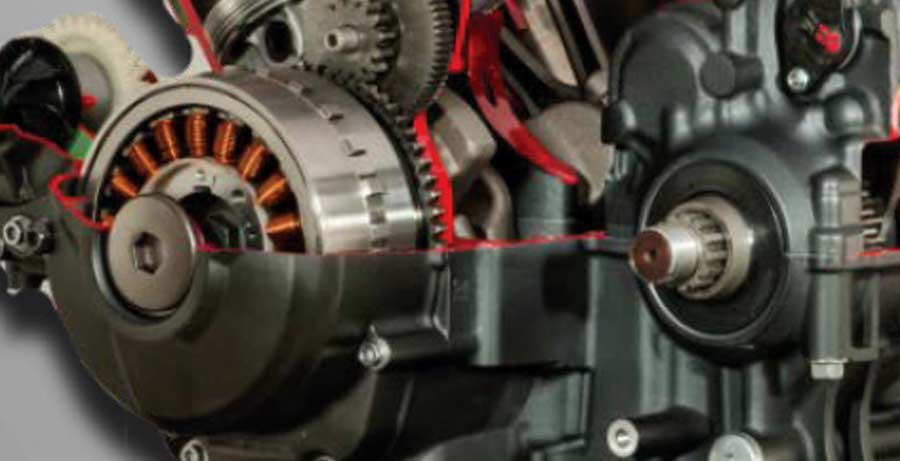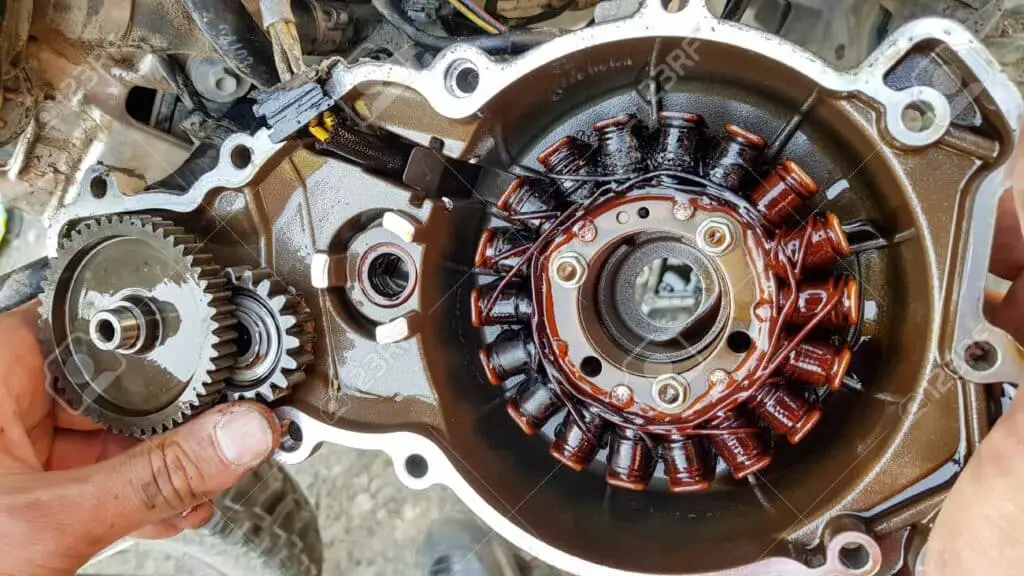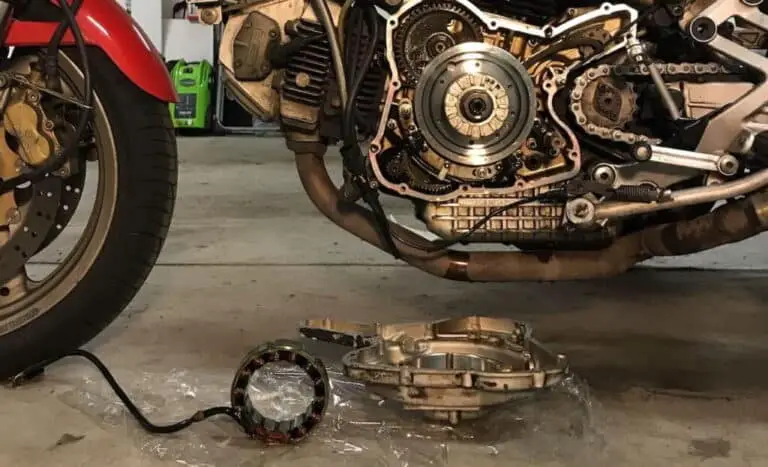Many people remain confused about the question, “Do Motorcycles have Alternators?” This is a common question that has one simple answer to it.
Yes, almost all bikes these days have an alternator installed in them. The alternator is that critical device that keeps the battery of the motorcycle charged and makes sure it stays running, every time you take it for a ride on the road. Just like a car alternator, motorcycles need a device to generate power and supply electricity to their headlights, blinkers, and many other electrical system & circuits.
Without an alternator, nothing of that sort would have been possible. You can think of your motorcycle alternator as a motorcycle charging system for your bike’s battery.
In fact, your motorcycle won’t even start in the first place if it does not have an alternator. Modern bikes tend to consume a lot of power and therefore, the alternator becomes a very critical component of the bike.
Functions of a Motorcycle Alternator

The electricity is produced within the motorcycle stator of an alternator which has three coils arranged radially around it. A spinning magnet inside each coil generates a voltage across its surface and this voltage can be converted into direct current or alternating current depending on how many poles there are in the rotor winding at any given time – two-pole AC being most common.
This is why motorcycles need an additional device called a regulator/rectifier (which converts DC to AC), which connects directly between the battery and starter motor with cables, instead of being directly connected to the stator. The main function of an alternator is to generate electricity, like a motorcycle charging system, and store it in a battery for later use, helping motorcycles run smoothly even on long journeys.
In motorcycles with older electrical systems, the battery will be charged only when the motorcycle is running – which slows down starting time from a dead stop. With more modern motorcycles that have electronic ignition systems, this problem is long gone.
However, motorcycles with no-load DC battery voltage regulators can recharge the batteries whenever they are moving down the road at speeds above four or five miles per hour (which means motorcycles will never discharge their batteries while stopped if their alternators are operating correctly).
In addition to this major function of charging motorcycles’ batteries and powering any electrical device within it, motorcycles also use the alternator to monitor problems with electrical components on motorcycles, like the battery itself.
If the voltage of the battery drops too low for any reason, the motorcycle’s electronic control unit (ECU) will switch on its warning light and/or signal the rider that something has gone wrong with the motorcycles’ power system.
How does a Motorcycle Alternator Work?
In layman’s terms, motorcycle alternators work by producing Alternate Current (AC) power. This is the power that ensures motorcycles’ batteries do not lose charge while the motorcycles are in use. The electricity is produced when a magnet rotates inside the stator coils of motorcycles’ alternators.
Just because this process happens correctly, you can hop on your motorcycle anytime to hit the road. It happens when your bike is running and without this process taking place, all bikers will need to change their batteries with a new one, only after completing one or two journeys.
The process goes like a cycle – the battery of a motorcycle produces Direct Current (DC), which is then used by the alternator to create a magnetic field which will in turn, convert the energy to AC. This converted energy is ultimately used to keep the motorcycle batteries powered. Without these motorcycle charging systems your battery would go flat within minutes of riding
Many motorcycles require AC power for the process of ignition to take place while for fuel injection and lighting, they require DC power. When you ride your motorcycle, the motion and the kinetic energy that gets generated actually help the alternator to generate and distribute power to all the features of your motorbike’s electrical system. It’s important to say that DC generators are only used in older bikes.
Difference Between Motorcycle Battery and Alternator

In simple terms, battery powers motorcycles while alternator charges motorcycles
As we’ve already mentioned, motorcycles require both a battery and an alternator to keep them running. The main difference between these two components is that motorcycles’ batteries can put out electricity (which motorcycles use to start up) but cannot take it in again. It means if you stop your motorcycle’s engine for some time, the motorcycles’ battery will lose its charge and motorcycles will not be able to start up again without either plugging the bikes into an electrical outlet or getting a new alternative power source installed on your bike.
Motorcycles’ alternators take electricity from motorcycles’ batteries and turn it into AC power which then goes into powering various electrical components of motorcycles, as well as charging motorcycles’ batteries. This is why motorcycles need an alternator to start up and run properly.
On the other hand, motorcycles’ batteries can’t take in electricity which means they can only put out DC power and cannot be used to turn AC power into DC power for motorcycles’ electrical systems which makes it crucial for motorcycles to have an alternator that can do this job instead.
What Happens When a Motorcycle Alternator Doesn’t Work?
One of the most common problems that can result from motorcycles’ alternators not working properly is the motorcycles’ inability to start up again. If motorcycles’ alternators are not producing AC power when in use, motorcycles will always lose DC power when they are up and running.
Motorcycles with bad alternators can also experience intermittent or no power at all, which is an indication that motorcycles need a new alternator installed.
When you have a bad alternator, your motorcycle battery will fail to hold the charge and it will feel sluggish to ride on it. Moreover, motorcycles with bad alternators also pose the threat of sparks being generated inside the motorcycles’ engine area which can become a fire hazard and motorcycles also run the risk of coming up with stalling problems while in use.
Conclusion
A motorcycle alternator is a very important system that motorcycles need to keep them going so motorcycles have batteries, too.
Remember this simple equation: motorcycles have batteries and they also have alternators.
Your motorcycles need both a battery and an alternator simultaneously to run smoothly and without suffering from sporadic or no power at all. Make sure you get a trustworthy professional to look into the issue of motorcycles’ not being able to start up again as soon as possible if you notice any unusual changes in your motorcycles’ behavior when they are running.
If motorcycles’ alternators are not doing their jobs properly, then there is nothing much that can be done on your own other than getting them replaced or going for a repair from a professional service mechanic.






